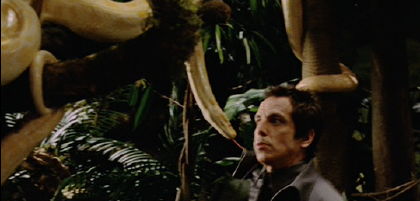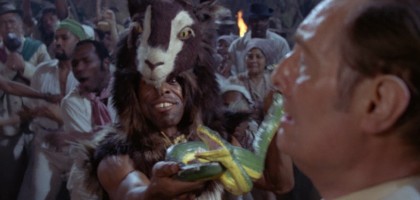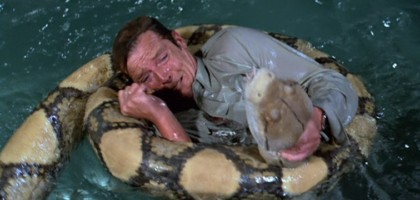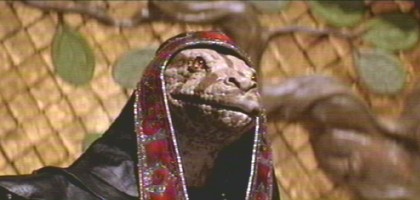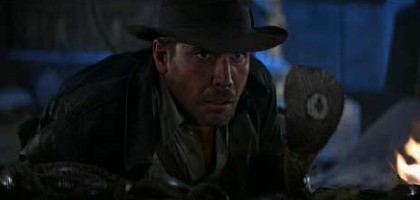
Our favourite ophidiophobe encounters snakes twice in the first of the three Indiana Jones movies. First, in South America, he finds himself in Jock’s plane, sharing a seat with Jock’s pet snake. You’d think that, being in South America, they’d use something South American, like a Boa Constrictor, which isn’t exactly hard to find. But no: they used a Burmese Python (Python molurus bivittatus) instead.
Then, of course, the scene: the Well of the Souls, full of snakes. As Spielberg recounts on the bonus disc, they started with a few thousand harmless snakes, then had to add more. Trouble is, most of what they added were glass snakes — which is to say, Glass Lizards (Ophiosaurus), legless lizards that are definitely lizards, with eyelids, ears, lizard scales and breakable tails (hence the name). I spotted an awful lot of them in the scene’s wide-angle shots; as for the smaller nonvenomous snakes, I couldn’t make them out, though I think I spotted at least one garter snake (my favourite snakes, so of course I would).
There were pythons, which were easier to spot: the striking snakes were small Reticulated Pythons (Python reticulatus) from southeast Asia, not the sort of thing you’d find in Egypt; there were some larger-bodied pythons, but I couldn’t tell whether they were African sebae or Asian molurus — it doesn’t matter, since neither are found in Egypt. And look: here are the Boa Constrictors they could have used at the start of the movie!
The cobra scene was well done: actors behind clear plastic for safety, of course. But the cobra was a Monocled Cobra (Naja kaouthia), rather than an Egyptian Cobra (Naja haje). Egyptian Cobras are psycho; Monocled Cobras are more common in captivity and have more distinctive markings.
But no asps (very dangerous), so far as I could tell.
